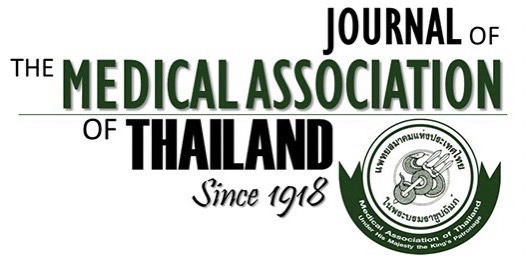Efficacy of Anthropometric Indicators as Risk Predictors of Metabolic Syndrome among Academic Staff: A Gender-Specific, Cross-Sectional Study
Aravan Mungvongsa¹, Siraporn Potivichayanon¹, Chavaboon Dechsukhum², Thidarat Somdee³, Suttinee Paenngoen⁴
Affiliation : ¹ Institute of Public Health, Suranaree University of Technology, Nakhon Ratchasima, Thailand; ² Institute of Medicine, Suranaree University of Technology, Nakhon Ratchasima, Thailand; ³ Faculty of Public Health, Mahasarakham University, MahaSarakham, Thailand; ⁴ Suranaree University of Technology Hospital, Suranaree University of Technology, Nakhon Ratchasima, Thailand
Background: Metabolic syndrome (MetS) is a cluster of conditions that increases the risk of non-communicable diseases, posing a significant public health problem. Identifying early risk predictors is a crucial strategy for effectively reducing premature mortality in at-risk individuals.
Objective: To evaluate the ability of gender-specific anthropometric indicators to predict MetS risk among academic staff.
Materials and Methods: A cross-sectional study was conducted in Thailand between April 19 and September 26, 2024. The present study enrolled 505 participants, all of whom were academic staff members aged 18 to 59 years. The research instruments consisted of a participant characteristics questionnaire, anthropometric measurements, and biochemical parameters obtained from medical records. Participants were randomly selected using a two-stage sampling method. The researchers evaluated the area under the curve (AUC) of the receiving operating curve (ROC) to predict MetS risk according to criteria established by the International Diabetes Federation (IDF).
Results: The overall prevalence of MetS was 34.1%. Logistic regression analyses showed that waist circumference (WC), hip circumference (Hip), waist-to-height ratio (WHtR), visceral adiposity index (VAI), A Body Shape Index (ABSI), and body roundness index (BRI) were significantly associated with an increased risk of MetS in both genders (p<0.05). According to AUC of ROC analysis, WC showed the highest predictive ability in men, with an AUC of 0.81 (95% confidence interval [CI] 0.74 to 0.88), followed by WHtR and VAI. In women, VAI had the highest AUC of 0.88 (95% CI 0.85 to 0.92), followed by WC and WHtR.
Conclusion: WC and VAI were the most effective predictors of MetS risk in men and women, respectively. Therefore, utilizing anthropometric indicators appropriate for each gender can enhance the accuracy of predicting MetS in at-risk individuals.
Received 4 December 2024 | Revised 21 February 2025 | Accepted 13 March 2025
DOI: 10.35755/jmedassocthai.2025.4.321-329-02078
Keywords : Anthropometric indicators; Predictors; Metabolic syndrome; Academic staff
All Articles
Download



